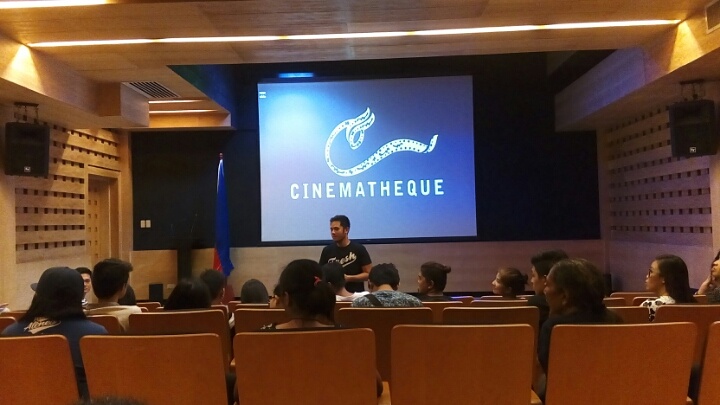QUEZON City, Philippines (October 4) – I remember I was once a cross-enrollee for a back subject last semester, which is World Literature. I am a Mass Communication student but during enrollment, the only available class for the said subject is under the College of Business Administration. The feeling of being alienated struck me hard. I was the only communication student in the class, and it was so unfortunate that it was a block section, that means making friends is a bit harder for they already have their own set of friends.
After the midterm examinations, our dear professor informed us that as we proceed to the final part of the semester, we will be watching different movies that are related to our subject. That’s when I started to make friends, my classmates and I now have something to talk about. Being a communication student, I must say that it is normal thing to watch a bunch of films. Furthermore, films may be considered as a “generic common denominator” among us.
Isn’t it nice to hear you co-student, co-worker or stranger at the mall talk about the same movie that haunted your thoughts for how many days and nights? Whatever genre it may be, a movie is still one of the best stepping stone to develop friendship. Whether it’s in your house’s sala set or at the mall, watching a movie together is still one of the best bonding for you and your friends.
There’s no way to deny though the fact that watching a film in a legitimate movie house gives us a different kind of feeling. The “movie house vibe” makes us drink mineral water instead of a more expensive apple green tea during our lunch break in order to save money; money that we need in order to pay the relatively expensive cinema ticket for us to experience the “cinema vibe” of the film that we are rooting for.
Being a student can sometimes offer a financial hindrance for those of us who want to watch movies in a movie house. So I have listed here five if the most student-friendly movie houses around the metro.
- UP Film Institute’s Cine Adarna and Videotheque
– With its proximity to the university where I am studying, Cine Adarna is my most frequently visited movie house. It can accommodate 800 cineastes. What keeps me coming back though to Cine Adarna is the occasional “Q&A with the cast and crew “of the film that is being screened. Ticket price ranges from 100 (for students) – 150 pesos and usually free for film festival screenings. Make sure to bring you school ID to avail the discount!
- CCP Arthouse Cinema

– This is the place where you can catch Cinemalaya films that you didn’t watch due to your unfriendly schedule. Every second and last Thursday of the month, CCP Dream Theater will be open for independent film buffs and what’s more enticing? Admission is free!
- Teatrino, Promenade Greenhills

– Aside from being a home for intimate concerts, Teatrino is also screening independent films with the ticket price of 200. They also provide occasional Q&A with the cast and crew.
- Cinema76 Film Society

– This micro cinema has a maximum seating capacity of 60. This may not be your ordinary cinema house for the couches were made of wood and they have pillows too! Located in San Juan, the building where this cinema is located also houses three film outfit, namely; Tuko Film Productions, Buchi Boy Films, and Artikulo Uno, the company responsible for last year’s breakout hit, “Henera Luna.” Ticket price ranges from 100-150 pesos.
- Cinematheque Centre Manila

– If you’re looking for place that has a cinema, museum, café, souvenir shop and a classroom (for lectures) rolled in one; Cinematheque Centre is the perfect place for you. This place is considered a film enthusiast heaven for being a one-stop shop for film buffs. Movie ticket price ranges from 100-150 pesos and festival screenings are sometimes free too!
There you have it! Hope you’ll be able to find time to drop by these amazing independent movie houses!
(written by Aronica Azores, edited by Jay Paul Carlos, additional research by Vince Alvin Villarin)








